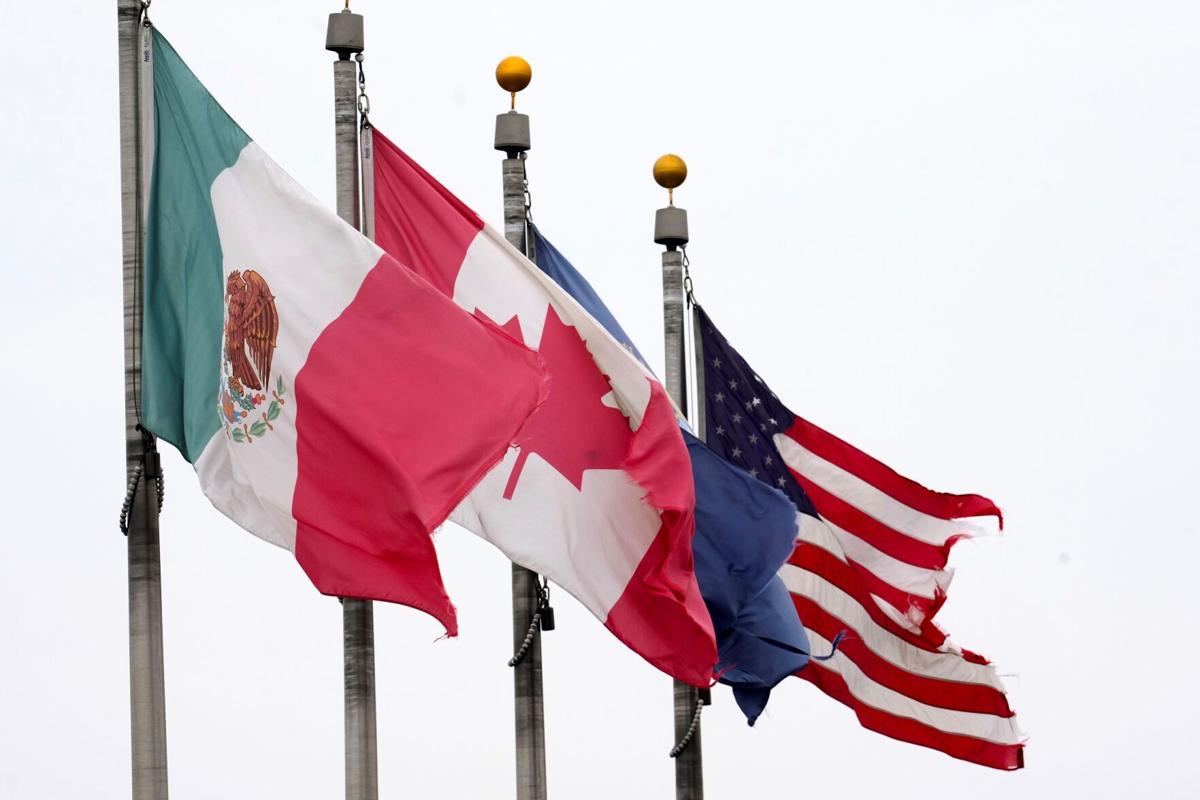Trump moves forward with tariffs on Canada, Mexico and China amid trade tensions and border security talks
President Trump’s March 4 tariff deadline looms as Canada, Mexico and China brace for economic consequences amidst heightened border security talks and ongoing trade tensions.

The global trade landscape has shifted once again as President Donald Trump announces the implementation of significant tariffs on imports from Canada, Mexico and China. This decision marks a critical moment in U.S. foreign policy, particularly with regard to trade relations and border security. Scheduled to take effect on March 4, 2025, the tariffs are expected to further escalate tensions between these key U.S. trading partners. The decision comes amidst ongoing negotiations aimed at addressing issues like drug trafficking, national security and economic fairness.
The tariffs target a broad range of goods, with Canada and Mexico facing a 25% levy on most imported products, while China is subjected to a 10% tariff. Although the tariffs were initially set to begin in early February, the plans faced delays due to last-minute negotiations between Trump and the leaders of Mexico and Canada. Despite these pauses, the new deadline of March 4 seems firm, with Trump asserting that the U.S. is being mistreated by foreign nations, thus justifying the need for such drastic measures. Both Canada and Mexico are already ramping up efforts to meet U.S. demands on border security, particularly in curbing fentanyl trafficking.

Tariffs of 25% on Canada and Mexico to start Tuesday. Photo: Montana Standard.
What you need to know?
In the latest chapter of U.S. foreign trade policy, President Donald Trump has confirmed that tariffs on imports from Canada, Mexico and China will proceed as scheduled, beginning on March 4, 2025. This marks a new phase in a trade war that has been in the making since Trump’s initial term in office. For Canada and Mexico, the tariffs will be set at 25% on most imports, while China will face a 10% tariff. While there were discussions to delay the implementation, the March 4 deadline appears to be unyielding.
The tariffs are not just a matter of economics but also reflect broader geopolitical dynamics. The U.S. has long expressed dissatisfaction with the trade practices of its neighbors and rivals. Canada and Mexico have already begun taking steps to address concerns raised by the U.S., including enhancing border security measures aimed at curbing drug trafficking. These measures include Mexico's deployment of National Guard troops and Canada’s establishment of a dedicated anti-fentanyl czar. However, Trump insists that these efforts don’t go far enough and has linked the tariffs to national security and unfair trade practices.
The U.S.-Mexico-Canada trade conundrum
The rationale behind these tariffs is tied to what the Trump administration views as years of trade imbalances and abuses. Mexico, in particular, has been under scrutiny due to the flow of illegal drugs across its border. President Trump has criticized both Canada and Mexico for not doing enough to address these issues, even as the two countries have taken steps to placate the U.S. by beefing up border enforcement. This trade war, therefore, is not just about economic fairness but also national security concerns related to drug smuggling.
China, too, remains in the crosshairs of U.S. trade policy. The 10% tariff, which is set to cover a wide range of goods, is part of a broader strategy to combat what the U.S. sees as unfair trade practices by China. While tensions with China have been ongoing for years, the latest round of tariffs could further complicate the trade relationship between the two economic giants, with significant global implications. For businesses in all three countries, the tariffs represent a significant challenge. Increased costs could lead to higher prices for consumers, supply chain disruptions and a reevaluation of sourcing strategies. As the trade dispute continues, companies will need to adapt quickly, exploring new markets or alternative sourcing options to mitigate the impact of these tariffs.












